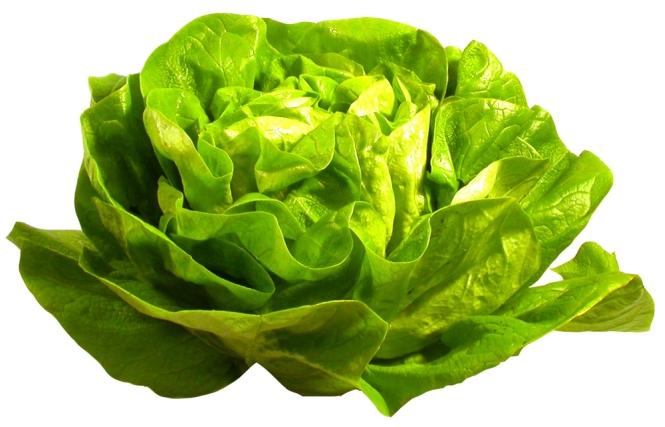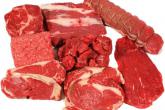Lettuce comes from the wild species found in India, Iran and Asia Minor. Lettuce was already cultivated in the fifth and fourth centuries BC in ancient Egypt, Greece and Rome. Lettuce gained popularity not immediately, but now is one of the most frequently consumed vegetables. There are several varieties of lettuce differing in shape, color, tenderness, flavor and shelf life. Lettuce is an annual plant, different varieties of lettuce belong to the Asteraceae family. Most of the botanical species produces rosettes of lettuce leaf or head mounted on a short stalk. The formation and elongation of the stem occurs with the development of incipient flower spike.
|
|
|
When buying a salad, choose only those heads that are not withered, black or rotten. The leaves should look fresh and should not be yellowed. The least harmful substances include lettuce from organic farming and water, those from greenhouse cultivation contain more nitrates and are smaller. Although nitrate is a natural component of plants, but due to the reduction of this group there are formed harmful to human and animal health nitrites substances. In combination with amines form carcinogenic compounds. Nitrates are reduced during transport, storage vegetables in too high a temperature or in vessels with very low oxygen content, as well as after ingestion under the influence of microflora in the gastrointestinal tract. Generally lettuce is a vegetable that can not be kept long, so it's best to eat it as soon as possible. Hard lettuce, which we are not going to eat in the next few days we shouldn?t wash. If we want to take a leaf to a sandwich, take it away and then wash. They should be in the refrigerator for no longer than a week. Other soft varieties we should store washed, dried, packed in a container and placed in the refrigerator on the bottom shelf. Stay fresh for several days. Lettuce is not suitable for freezing, or pickling. Lettuce leaves should not be cut with a knife (except lettuce), but tear to pieces with hands. Steel, which the blade is made of reacts with enzymes of lettuce, which makes leaves bitter and deteriorate the taste. Lettuce is eaten fresh, raw - in addition to sandwiches, salads, as a decorative platters of cold meats, fish, eggs, vegetables and cheese. The leaves tastes well with grilled and roasted meats. Interesting effects brings the flavor mixing of different kinds of lettuce, combined with sauces: vinaigrette, yogurt or mayonnaise.
Lettuce owes its color to chlorophyll, which has bactericidal activity, accelerates healing, protects against germs and helps to overcome infection. It should be also added that the dark green outer leaves, which we usually reject, contain more vitamins and minerals than the light green center. Lettuce also contains antioxidants such as lutein and zeaxanthin. It also provides anti-cancer indoles. Lettuce is a good source of vitamin A (beta carotene), folic acid, vitamin K, vitamin B, potassium, iron and manganese.
The most important and most popular varieties of lettuce
Butterhead lettuce. The most popular lettuce. Its leaves are about 20 cm in diameter and are very expansive. It has delicate, loose leaves and mild flavor. Most serve it with cream, but much tastier with vinaigrette sauce. Perfectly with the corn, peas, peppers, cucumber, tomato.
Iceberg lettuce. It has a crisp and juicy green leaves, tightly rolled up in a large, heavy head. It is characterized by a mild flavor. Extremely long lasting freshness. You can store it in the refrigerator up to several days. Iceberg lettuce is a great addition to fast food, a feta salad (with peppers, tomato, cucumber, fresh basil, feta cheese and vinaigrette), and yogurt sauces.
Lamb's lettuce. Its leaves are the smallest size of all available varieties of lettuce. They are aromatic, light or dark green, slightly nutty flavor. Best matches the other vegetables, in a salad. You can add it to the other greens, like spinach, cook, cook soup.
Oak lettuce. It has a corrugated green leaves with a distinctive deep red color, slightly cutted, brittle leaves have a distinctive nutty flavor and are very decorative. Unfortunately, it is very unstable, stays fresh only for 1-2 days. This is given in blends with other varieties as a color variety and rich flavor salads, as well as to decorate dishes. Perfectly with vinaigrette and creamy sauce.
Romaine lettuce. It has elongated leaves with visible nerves or smooth, which form a loose oval head. They can be dark green - they contain more vitamins, or yellow-green - more delicate in flavor. It is sweeter than butter and iceberg lettuce. From the look is a bit like Chinese cabbage. The taste is sweeter and softer than the well-known butterhead lettuces. Tastes great with heavy mayonnaise-based sauces, mold cheese and nuts.
Arugula lettuce. It looks a bit like a salad, a bit like a weed. It has small dark green, narrow and elongated jagged leaves similar to dandelion leaves, or softer, rounded, resembling radish leaves and strong taste of pepper, horseradish and nutty at the same time, because usually it is combined with other varieties of lettuce or make very distinct dishes.
Radicchio lettuce. Lettuce leaves for claret of white nerve has a characteristic bitter taste, which can be mitigated by adding a little honey to the sauce, sugar and dried fruit. White bumps in the leaves and head are bitter. The heads are not suitable to eat and you need to remove it.
Lollo lettuce. It has very decorative long, ribbed, green or maroon leaves, loosely gathered in a small head. Combines beautifully with other greens, perfect for decorating platters of snacks and other dishes. The taste is sharp, but not very conspicuous.
Calories and nutritional values of butterhead lettuce
| Nutrient | Content in 100 [g] |
|---|---|
| Calories (energy value) | 13 kcal / 55 kJ |
| Proteins | 1,35 g |
| Total lipids (fats) | 0,22 g |
| Total saturated fatty acids | 0,029 g |
| Total monounsaturated fatty acids | 0,008 g |
| Total polyunsaturated fatty acids | 0,117 g |
| Omega 3 (n-3) fatty acids | 31 mg |
| Omega 6 (n-6) fatty acids | 17 mg |
| Carbohydrates | 2,23 g |
| Dietary fiber | 1,10 g |
| Vitamin A | 3312 I.U. |
| Vitamin D | ~ |
| Vitamin E | 0,18 mg |
| Vitamin K | 102 ?g |
| Vitamin C | 3,7 mg |
| Vitamin B1 (Thiamin) | 0,057 mg |
| Vitamin B2 (Riboflavin) | 0,062 mg |
| Vitamin B3 (vitamin PP, Niacin) | 0,357 mg |
| Vitamin B6 | 0,082 mg |
| Folate (vitamin B9) | 73 ?g |
| Vitamin B12 (Cobalamin) | 0,0 ?g |
| Pantothenic acid (vitamin B5) | 0,150 mg |
| Calcium | 35 mg |
| Iron | 1,24 mg |
| Magnesium | 13 mg |
| Phosphorus | 33 mg |
| Potassium | 238 mg |
| Sodium | 5 mg |
| Zinc | 0,20 mg |
| Copper | 0,02 mg |
| Manganese | 0,18 mg |
| Selenium | 0,6 ?g |
| Fluoride | ~ |
| Cholesterol | 0,0 mg |
| Phytosterols | ~ |

















